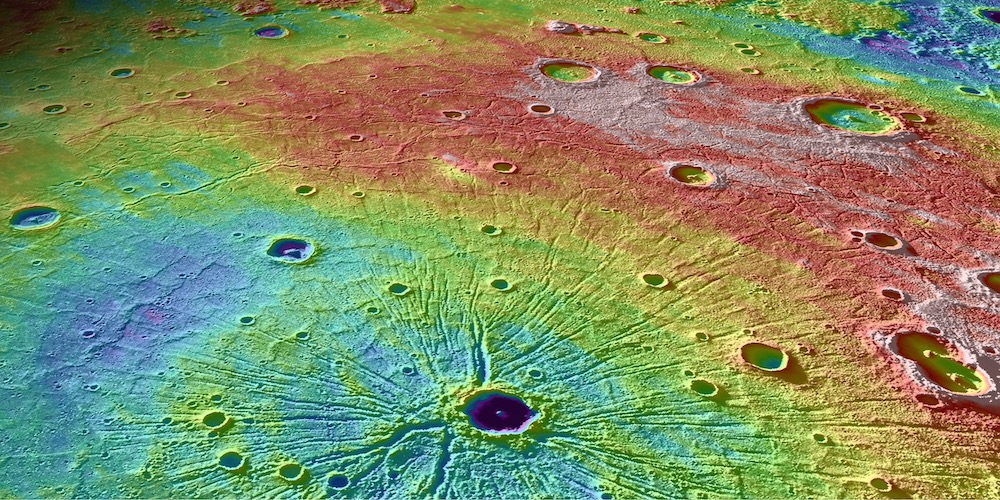Forming Mercury by Giant Impacts

The smallest planet in our Solar System has a large iron core. How come? According to the most popular theory, Mercury lost big parts of its rocky mantle in a collision. Alice Chau and her colleagues at the University of Zürich simulated different scenarios with a super computer. Their result: Forming Mercury by giant impacts is feasible but difficult.
In 1988, Willy Benz, now director of the NCCR PlanetS, and colleagues suggested that this was due to the blasting off of the mantle during a giant impact and simulated such a process with computer calculations which were refined in 2007. “However, the exact conditions that lead to Mercury’s formation via a giant impact are still unknown,” says Chau. Therefore, together with her colleagues at the Institute for Computational Science she decided to investigate the giant impact hypothesis based on simulations performed with one of the most powerful supercomputers in Europe. The machine called “Piz Daint” named after a prominent peak in Grisons is located at the Swiss National Supercomputing Centre (CSCS) in Lugano.
“We investigated three different scenarios,” explains Chau. In “Case-1” the proto-Mercury is hit by a smaller body as in the simulations calculated by Benz et al. in 2007. In “Case-2” Mercury is actually the impactor and collides with a larger body which no longer resides in the Solar System. This is called the hit-and-run scenario. In the third case, Mercury is hit by multiple impactors. “We found that it is possible to form Mercury in all these scenarios but each of them requires rather specific conditions,” summarizes Chau.
Multiple impacts more probable
For instance, in a single violent collision the impact angle and velocity have to be highly tuned to reproduce Mercury’s mass and iron-to-rock ratio. In addition, it is still an open question whether datacollected by the NASA spacecraft Messenger are consistent with a single giant impact. New observations by Europe’s BepiColombo could solve this problem, once the spacecraft will have arrived at Mercury in 2025. “It is therefore possible, and maybe even more probable, that Mercury formed as a result of multiple impacts,” the team writes in its paper published in the Astrophysical Journal.
The fact that it seems difficult to form Mercury maybe disappointing, but it also has something to offer: “It is consistent with the fact that we observed only very few exoplanets that have similar average density as Mercury among the few thousands we already know,” says Chau: “What will be very interesting is if we discover more of these planets to investigate if they have a common formation mechanism with Mercury, and maybe they will help us to better understand the origin our own Mercury.“
Alice Chau, Christian Reinhardt, Ravit Helled, and Joachim Stadel: Forming Mercury by Giant Impacts, The Astrophysical Journal, Volume 865, Number 1,
DOI: https://doi.org/10.3847/1538-4357/aad8b0
Categories: External Newsletter, News

